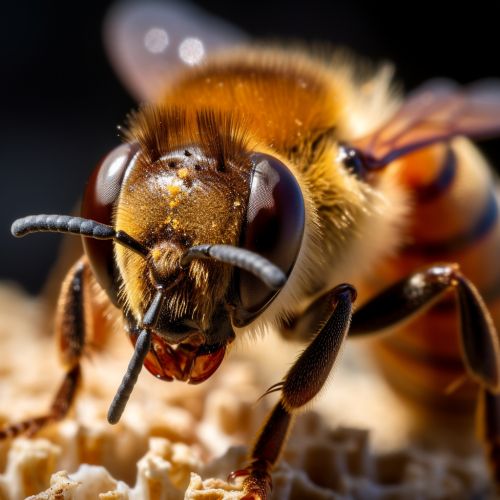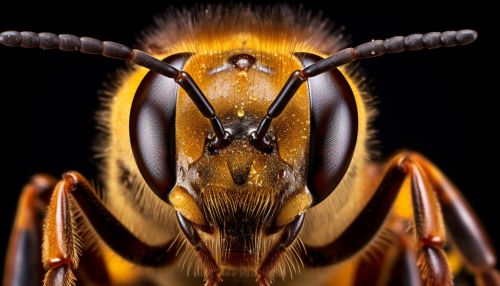Queen Mandibular Pheromone
Introduction
The Queen Mandibular Pheromone (QMP) is a chemical substance secreted by the queen honeybee, Apis mellifera, from her mandibular glands. This pheromone plays a crucial role in the maintenance of social order within the bee colony, affecting the behavior and physiology of worker bees. The QMP is a complex blend of five main constituents, each contributing to the overall effect of the pheromone on the colony.
Composition
The QMP is composed of five main chemical compounds: 9-oxo-2-decenoic acid (9-ODA), 9-hydroxy-2-decenoic acid (9-HDA), methyl p-hydroxybenzoate (HOB), 4-hydroxy-3-methoxyphenylethanol (HVA), and 10-hydroxy-decanoic acid (10-HDAA). Each of these compounds plays a unique role in the overall effect of the QMP on the colony.


Functions
The QMP serves several functions within the bee colony. It is primarily known for its role in suppressing the reproductive development of worker bees, maintaining the queen's dominance within the colony. The QMP also influences the behavior of worker bees, promoting their attention and care towards the queen.
Reproductive Suppression
One of the key functions of the QMP is the suppression of ovary development in worker bees. The presence of QMP in the hive inhibits the production of vitellogenin, a yolk protein precursor, in worker bees. This suppression prevents the workers from developing mature ovaries and becoming reproductive competitors to the queen.
Worker Behavior
The QMP also influences the behavior of worker bees. Exposure to QMP promotes the performance of tasks related to the care and maintenance of the queen, such as grooming and feeding. The pheromone also stimulates the workers to forage for food and collect resources for the colony.
Mechanism of Action
The QMP exerts its effects on worker bees through a complex mechanism involving the olfactory system. The pheromone is detected by the antennae of worker bees, where it binds to specific olfactory receptors. This binding triggers a cascade of neural signals that eventually reach the brain, influencing the behavior and physiology of the worker bees.
Impact on Colony Health
The presence of a queen producing QMP is crucial for the health and survival of the bee colony. Without the pheromone, worker bees may start to develop their ovaries and lay eggs, leading to a decrease in the overall productivity of the colony. Furthermore, the absence of QMP can lead to increased aggression among worker bees, disrupting the social order within the colony.
